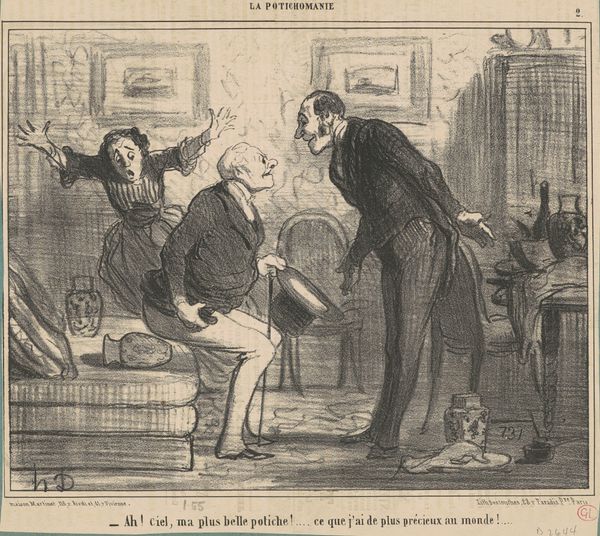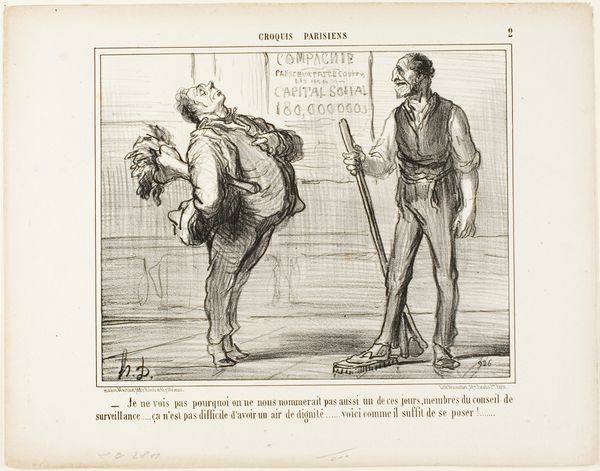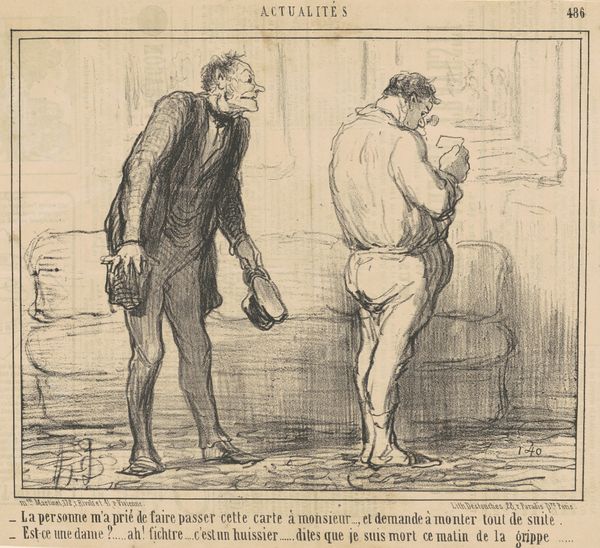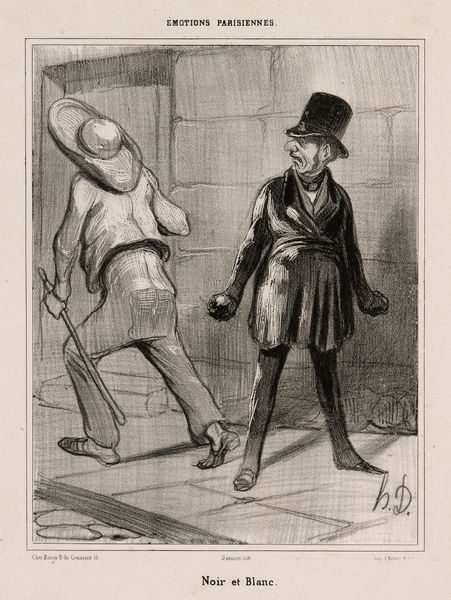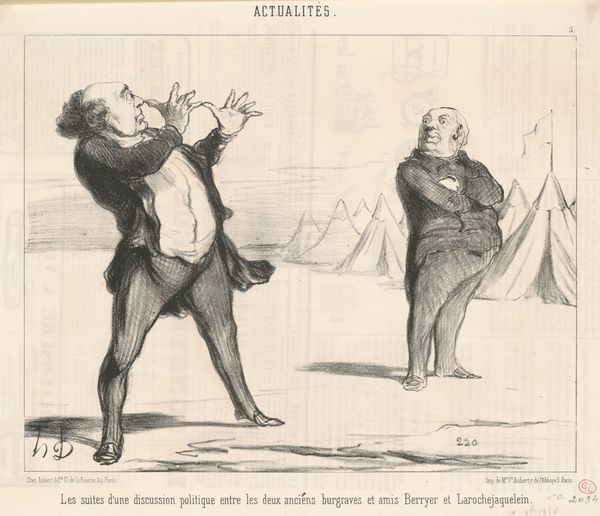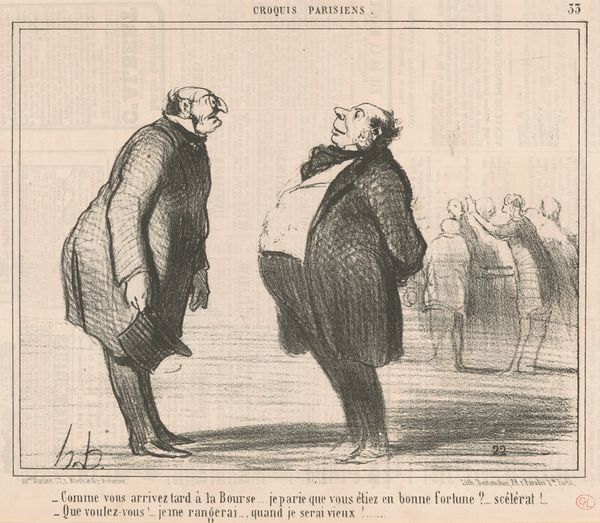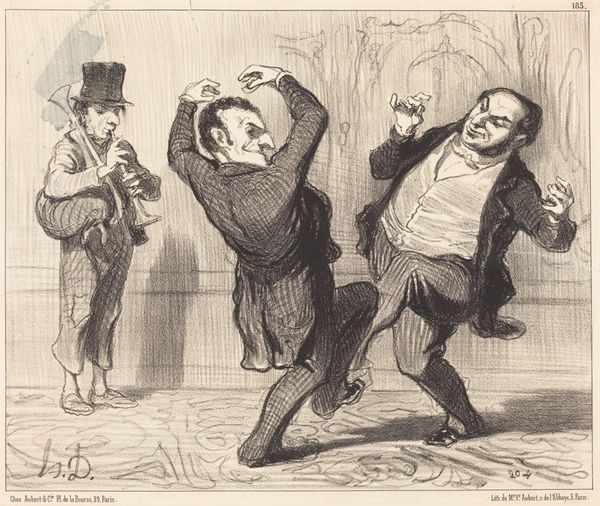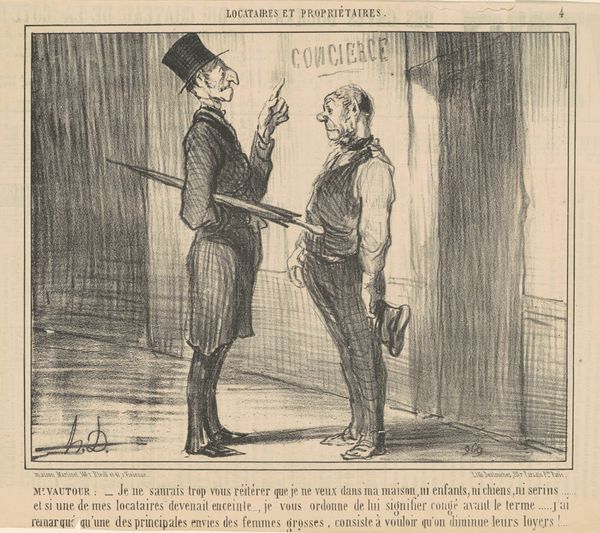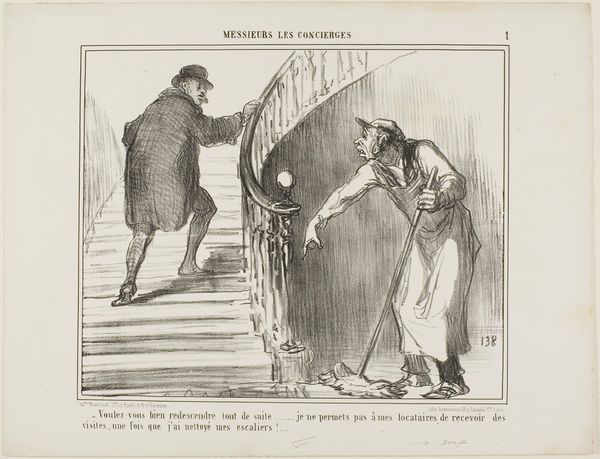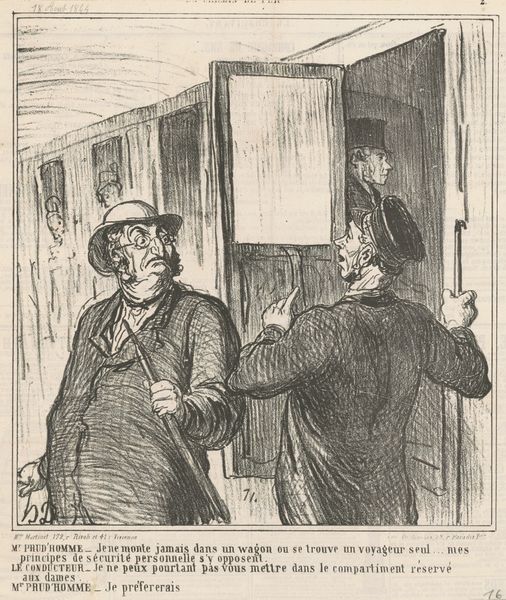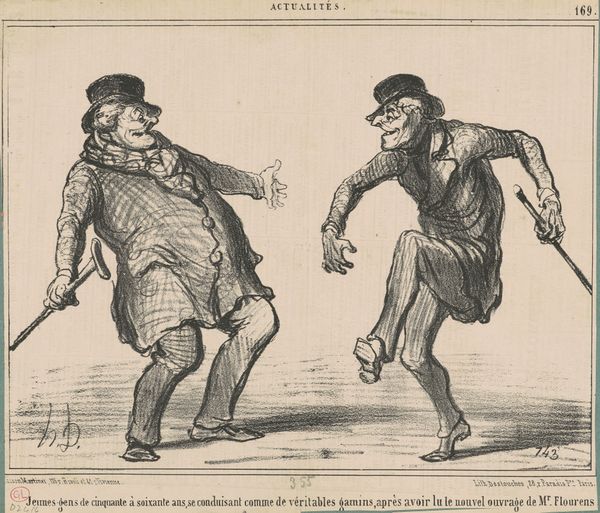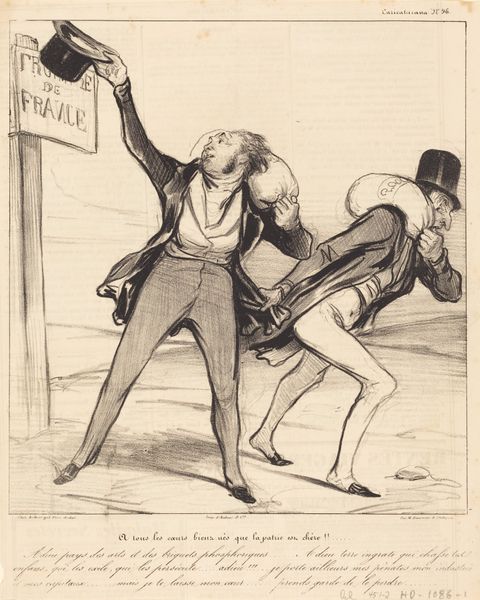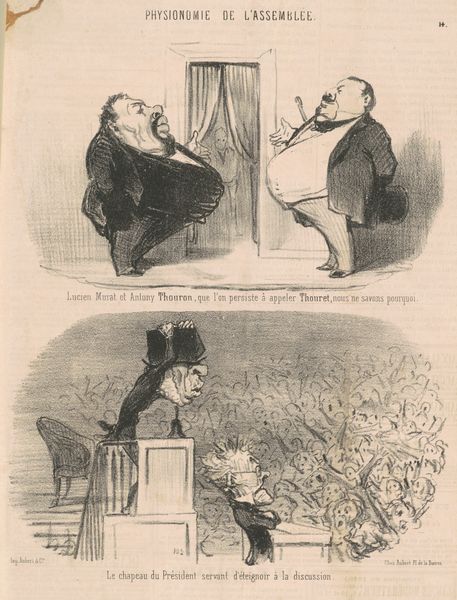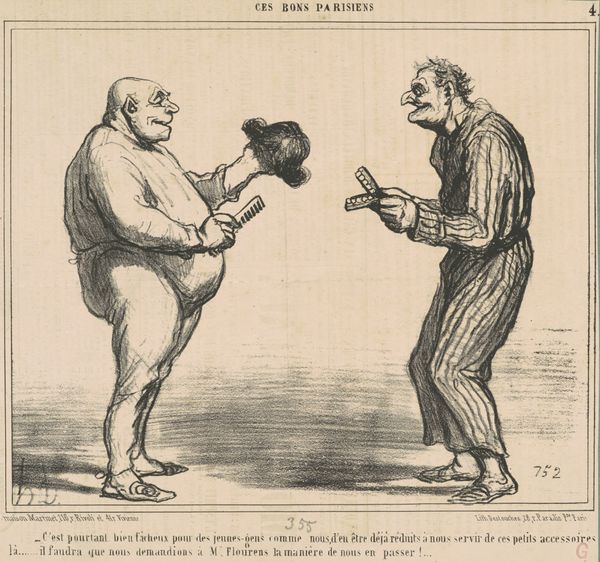
Copyright: National Gallery of Art: CC0 1.0
Editor: Here we have Honoré Daumier's lithograph, "M. Prudhomme visitant les ateliers..." from around the 19th century. It depicts a stout gentleman inspecting artworks in a gallery setting. The mood feels subtly satirical, with the man's exaggerated form and perplexed expression. What do you see in this piece, considering its historical and social context? Curator: Well, this lithograph speaks volumes about the evolving relationship between art, the public, and the burgeoning art market in 19th-century Paris. Daumier, through his caricatures, often critiqued the bourgeoisie and their often superficial engagement with culture. The character of M. Prudhomme embodies this type—the well-meaning but clueless art consumer. Notice how the composition directs our attention to Prudhomme's confusion and self-importance rather than to the art itself. How might this critique relate to the rise of Impressionism at the time? Editor: So, it's like Daumier is commenting on the art world becoming more accessible, but also more vulnerable to misunderstanding and, perhaps, even exploitation by those who don’t truly appreciate it? Curator: Precisely. Daumier’s works functioned as social commentary, shaping public opinion by questioning cultural values of the era. Editor: That makes so much sense. I was just looking at the figure and the technique, but I now understand that there is so much social meaning loaded into what looks, at first glance, like a simple caricature. Thanks! Curator: Absolutely! Considering art's role in society can give us new ways of viewing an artwork!
Comments
No comments
Be the first to comment and join the conversation on the ultimate creative platform.
